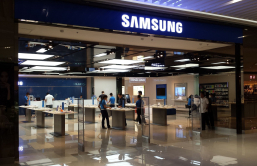
(Photo : Pexels)
US Dollars
- U.S. consumer spending rose by 0.2% in August, indicating solid economic growth.
- Spending was concentrated in services, while goods spending dipped by 0.1%.
- Easing inflation and a narrowing goods trade deficit could impact the Federal Reserve's interest rate decisions.
- An elevated saving rate suggests consumers are cautious, potentially moderating overall consumption growth.
The U.S. economy, in the face of fluctuating economic indicators, demonstrated resilience with consumer spending in August showing a slight increase, albeit less than expected.
The Commerce Department reported a 0.2% rise in consumer spending, a key driver of the U.S. economy, indicating that solid economic growth persisted in the third quarter. This modest increase, however, did not significantly alter expectations of continued economic growth.
The report also highlighted a shift in consumer spending patterns. Spending was concentrated in services, which rose by 0.4%, following a 0.3% increase in July. This included outlays on housing, utilities, financial services, and insurance.
There were also increases in spending on healthcare, transportation, and recreation services. Consumers additionally boosted spending at bars and restaurants and stayed at hotels and motels.
However, goods spending dipped by 0.1% as purchases of motor vehicles and parts fell, and receipts at service stations also dropped amid cheaper gasoline. This shift in consumer spending patterns indicates that while overall spending growth was modest, consumers are still allocating funds to experiences and essential services.
Inflation Eases, Impacting Federal Reserve's Decisions
The data also revealed that the annual rise in prices was the smallest in just over 3-1/2 years. This easing inflation is a crucial factor for the Federal Reserve's decision on interest rates in November. If inflation is consistently below the Fed's target, it may reduce the pressure for aggressive interest rate hikes, potentially leading to a smaller rate cut or even maintaining the current rate.
Another significant finding was the narrowing of the goods trade deficit, which suggests that imports are growing at a slower pace than exports. This is positive for GDP growth as when exports exceed imports, it contributes positively to the net export component of GDP.
This means that trade is likely to have a smaller drag on overall economic growth than previously anticipated, potentially offsetting some of the slowdown in other areas and supporting the view of solid economic growth in the third quarter.
Elevated Saving Rate and Its Implications
The report also showed an elevated saving rate and still-strong wage gains, which are seen as providing a firmer base for consumer spending in the months ahead. The saving rate slipped to a still-lofty 4.8% from an upwardly revised 4.9% in July.
This suggests that despite solid economic activity and low unemployment, consumers are saving more. A higher saving rate could provide a buffer for households against economic uncertainties, potentially allowing for sustained consumer spending in the future as these savings could be tapped into.
Economists, however, did not view the data as soft enough to compel the Federal Reserve to deliver another 50 basis points interest rate cut in November as hoped by investors. "The resilience of consumer spending and the stronger foundations strengthen our conviction that the near-term outlook for the economy remains bright," said Michael Pearce, deputy chief U.S. economist at Oxford Economics.
That should eventually help drive a re-acceleration in the pace of hiring and help keep labor market conditions solid over the coming year or two. That is one factor that will help convince the Fed to slow the pace of rate cuts next year.









